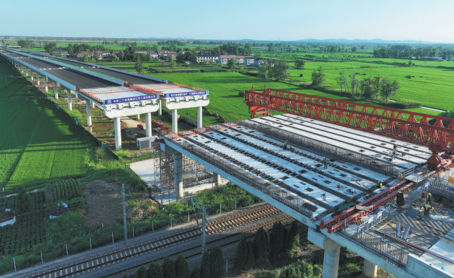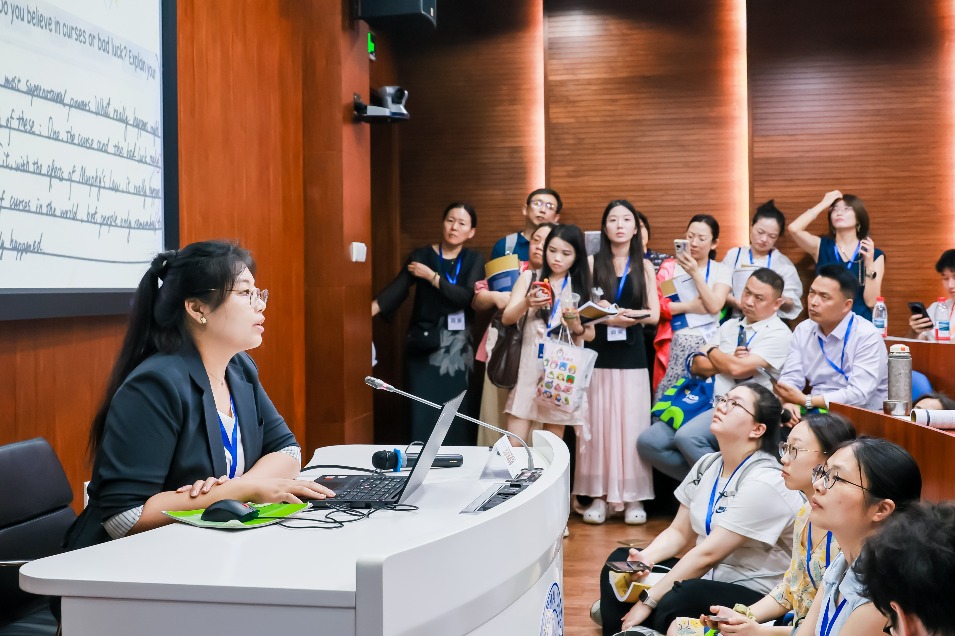Nation's high-speed rail development brings global partners, cities closer

BEIJING — Weeks after the conclusion of the 12th International Union of Railways World Congress on High-Speed Rail, industry leaders are still taking stock of China's rapid railway development and its expanding global influence.
Held on July 8-11 in Beijing, the congress drew over 2,000 participants from more than 60 countries, regions and international organizations. For many, the event offered firsthand insight into China's achievements and provided a potential roadmap for boosting global connectivity.
"In less than two decades, China has created the largest and most advanced high-speed rail system in the world," said UIC Chairman Alan Beroud. "It's reshaping mobility, the economy and regional development."
China's high-speed rail network spans about 48,000 kilometers and connects nearly every city with a population of over 500,000, which is a "vital toolkit" for national cohesion and growth, as described by Kevin Smith, editor-in-chief of Britain's International Railway Journal.
"Nobody has done this sort of network expansion in a short period," said Dennis Noble, an engineer with Queensland Rail in Australia. "It's very commendable, and something others can look forward to."
Visitors at the congress experienced China's latest trains, including the CR400 Fuxing and the prototype of 450 kilometers per hour CR450, the world's fastest high-speed train. "The new trains are modern, faster, better," said Kaido Zimmermann, general director of Estonian Railways.
"I think it's a central plan to connect the whole country and to promote economic development," Smith said during his trial run on the CR400. "The presentations we've seen at this event showed that there's a real willingness to change the geography of the country, bringing cities that are once distant much closer together."
China's high-speed rail is already transforming regions beyond its borders, serving as a practical model for many countries.
"Most countries experience the same starting point as China," said Ulan Kulov, deputy general manager of the China-Kyrgyzstan-Uzbekistan Railway Co.
"We can go this way faster if we learn from China, because we don't have to reinvent it, and we can use existing technologies and go fast forward."
Richard Neussl, managing director of Austria's Kontron Transportation Group, said, "I'm really impressed by seeing the powerful rail industry you're having here, and I expected to see what the industry is doing and what we can use out of this experience for Europe."
The Jakarta-Bandung High-Speed Railway in Indonesia, built with Chinese technology, has cut travel time from over three hours to just 46 minutes. The Hungary-Serbia Railway has shortened the Budapest-Belgrade journey from eight hours to three.
In Laos, the China-Laos Railway has become a key driver of development, transporting more than 52.7 million passengers and 59.4 million metric tons of cargo as of May.
"The railway has directly and indirectly supported the socioeconomic development in Laos, and also boosted the income of people living along the route," said Daochinda Siharath, managing director of the Lao National Railway Authority.
This year marked the second time China has hosted the congress since its launch by the UIC in 1992.Now held every two to three years, the event remains the premier gathering for the high-speed rail sector.
The congress also spotlighted innovation and co-development. In his opening remarks, Chinese Vice-Premier Zhang Guoqing said China will contribute more wisdom, technology and solutions to the development of high-speed rail around the world.
Zhang added that China is willing to share its experience in high-speed railway construction and operations, and to work with other countries to promote the application of cutting-edge technologies in the sector.
At the accompanying exhibition, Japanese firm Hitachi NICO Transmission Co Ltd — a longtime partner in China — highlighted new opportunities. "In the past 40-plus years, it was through our development in China that we were able to seize unprecedented opportunities," said company President Matsui Shiro.
"The Belt and Road Initiative has opened new doors for China-Japan joint ventures in third-party markets," Matsui said.
"We see great prospects for effective partnerships in many areas."
Xinhua

Today's Top News
- China and US agree to push for extension of tariff pause after Stockholm negotiations
- US, China trade talks candid, in-depth, constructive, says China intl trade representative
- China unveils delegation for Chengdu World Games
- Xi urges youths to champion vision of peace
- All-out relief efforts underway in flood-hit regions
- Crucial to foster stable China-ROK ties






























